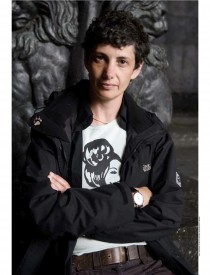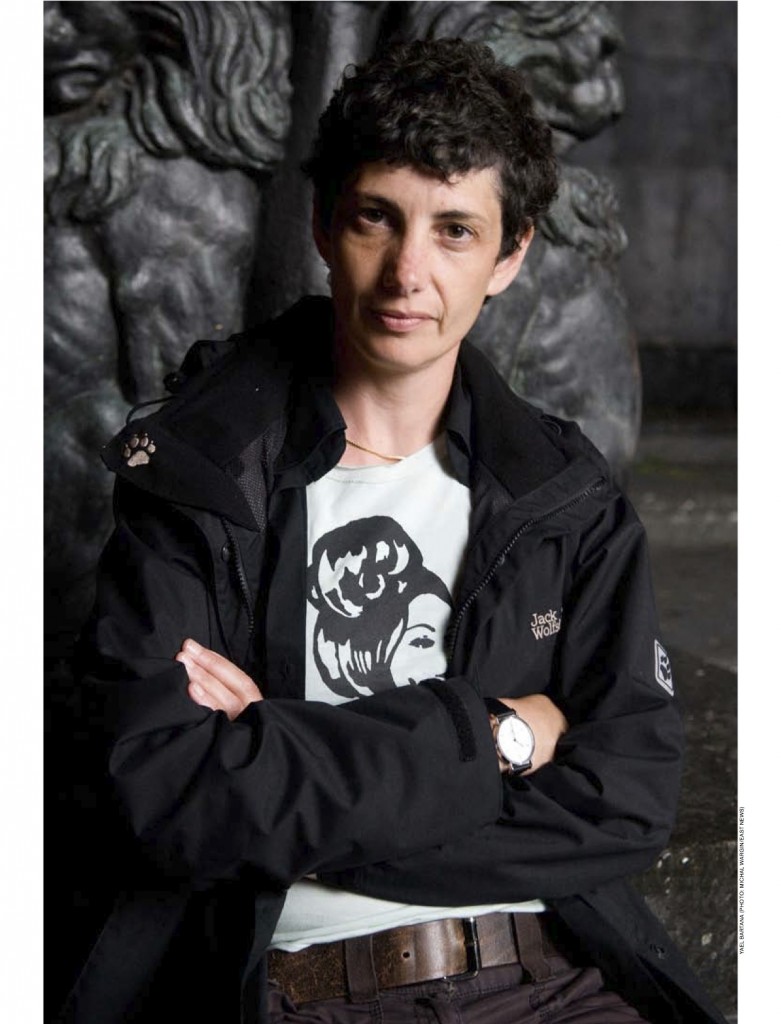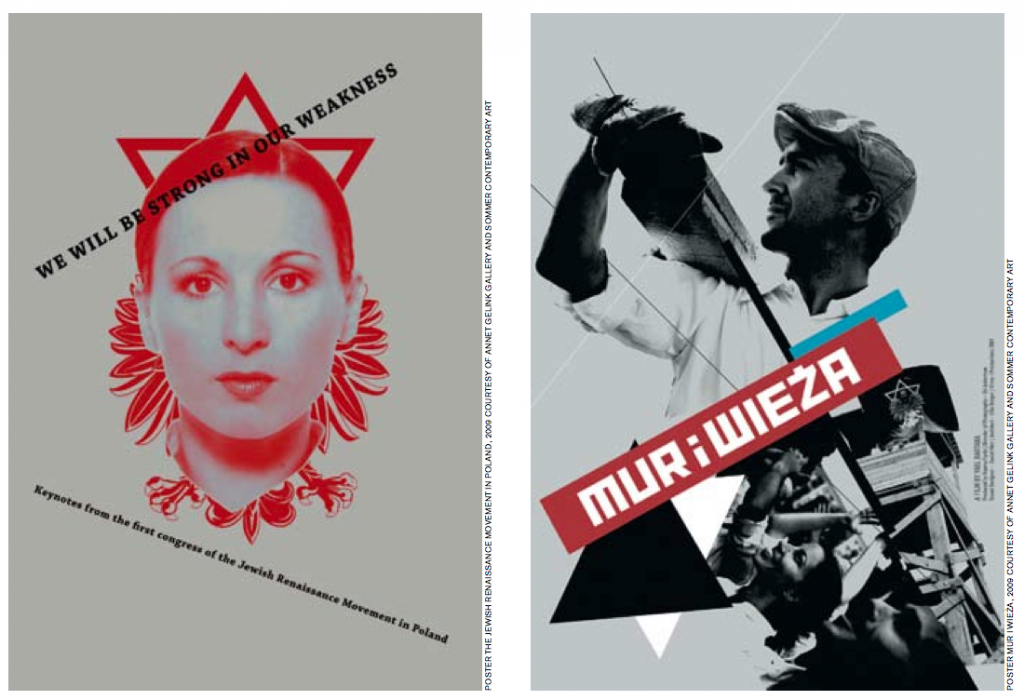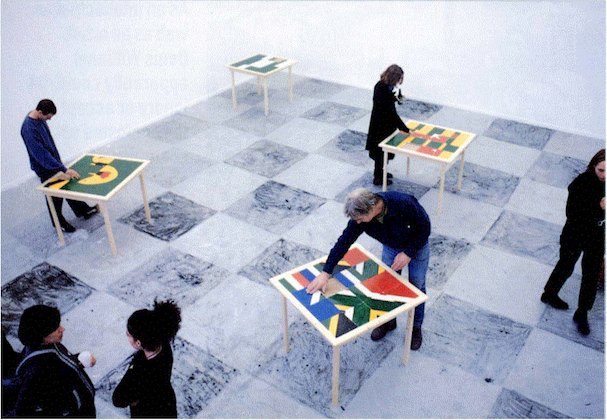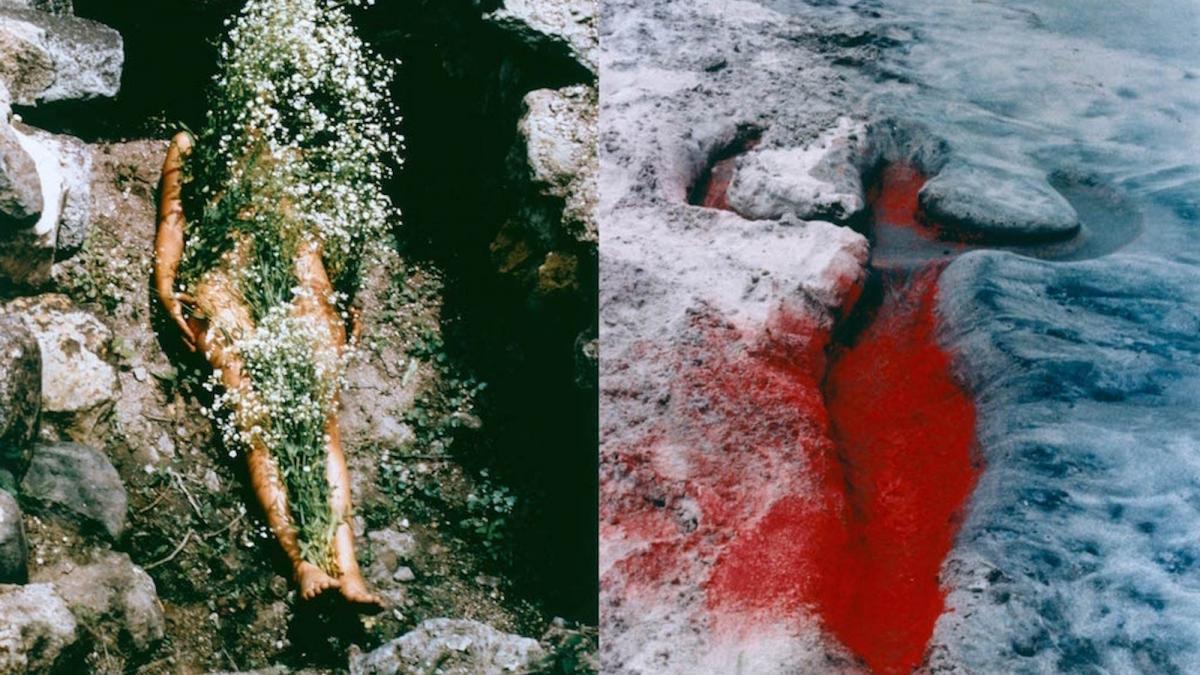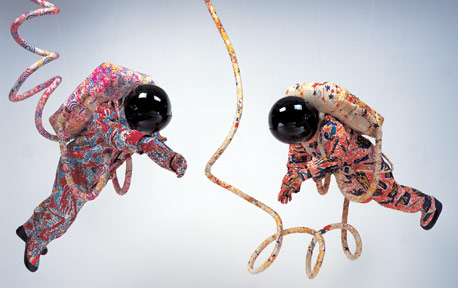ARTICLE – MAY 2011
Interview Yael Bartana
When Art Becomes Real Stuff
By Nina Folkersma
Published in Fanatismo
The internationally acclaimed artist Yael Bartana (Israel, 1970) is selected to represent Poland for the Venice Biennial in June 2011. She will show the complete ‘Polish Trilogy’, including the third and new film entitled ‘… and Europe will be stunned’. Nina Folkersma, curator of You Are All Individual, talks to the artist about her new film and the exhibition in Amsterdam.
Yael Bartana’s films have been described as critical, yet undeniably poetic reflections on the complex relationship between the individual and society. In a borderland between reality, fiction and propaganda, Bartana focuses on ceremonies, public rituals and social diversions that are intended to reaffirm a collective or national identity.
In the first film of the trilogy that will be shown in the Polish pavilion in Venice, Mary Koszmary (Nightmares, 2007), we see a young man, portrayed by the left-wing Polish critic and activist Slawomir Sierakowski, entering Warsaw’s dilapidated Olympic Stadium. He climbs a podium and delivers a compelling speech, inciting three million Jews to return to Poland. His monologue is permeated by great optimism, suggesting that in order for Poland to be fully accepted by other Europeans, the country must embrace tolerance and multiculturalism and welcome back its Jews. His sole audience is a small troop of young, patriotic scouts bearing Polish flags who stencil the field with the following sentence, ‘3,300,000 Jews can change the life of 40,000,000 Poles’.
While Bartana’s early films mostly dealt with the history of Israel and the Israeli-Palestinian conflict, she has recently increasingly staged her films, and proposed utopic narratives for new chapters of history. Four years ago Bartana started working on the ‘Polish Trilogy’, a project that addresses contemporary anti-Semitism and xenophobia in Poland, the longing for the Jewish past among liberal Polish intellectuals, the desire among a new generation of Poles to be fully accepted as Europeans, and the Zionist dream of return to Israel.
Nightmares was the first of three, the second film Mur i Wieża (Wall and Tower, 2009) answers the call of Sierakowski., the leader of the fictional Jewish Renaissance Movement in Poland. In the same propagandist style the film shows how a group of young traditionally dressed Jewish pioneers return to Warsaw. At the spot where in World War II the Warsaw Ghetto was located,, the cheerfully young people are building a new settlement reminding one of the settlements founded by Jewish colonists in the thirties on Palestinian soil. Bartana hints in this film at the Zionist dream, with heroic images of strong, beautiful men and women building their new country undisturbed by difficult conditions. At the watchtower a blood-red flag with a new symbol has been raised – the Star of David combined with the Polish eagle. Approvingly watched by Sierakowski, but simultaneously inquiringly looked upon by Polish passers-by.
Yael Bartana, how did the ‘Polish Trilogy’ come about? Why are you so interested in Poland?
‘A few years ago I was invited by Foksal Gallery – a small but influential gallery in Warsaw – to come to Poland. What motivated me in particular was that they told me that Israel and Poland are very similar. I wanted to understand what that actually means, in terms of the people, the nation, the history. A more personal reason is that my grandparents came from Poland. And my grandparents were also killed in Poland. Of course, Poland and Israel are very much connected because of the Holocaust. Still Poland hasn’t really dealt with this history yet. If you compare it to Germany, it’s a completely different situation. In Germany they have somehow dealt with their past and their guilt, but in Poland people are still quite ignorant. They see the Holocaust as a tragedy of the whole of occupied Poland, so they perceive themselves as victims. The separation of the Christian and Jewish communities increased the feeling that what was happening to the Jews was not really of interest to the Poles. Poland is a very Catholic, very nationalist country, and very anti-Semite.’
Do you still feel it is anti-Semite?
‘O yes it is, very much so. I’m not talking about the young generation. There is a young leftish generation that is much more open and that wants to have a change in Poland. That is actually my main motivation of working there. But they are still a minority. The majority of the Polish people is very nationalist, very racist. The left is very small, like in Israel. Maybe that is the similarity. Along with the fact that Poland and Israel are both very traumatised nations. I started the project a few years ago to provoke a new discourse about the situation in Poland today, trying to change and open up the mentality of people.’
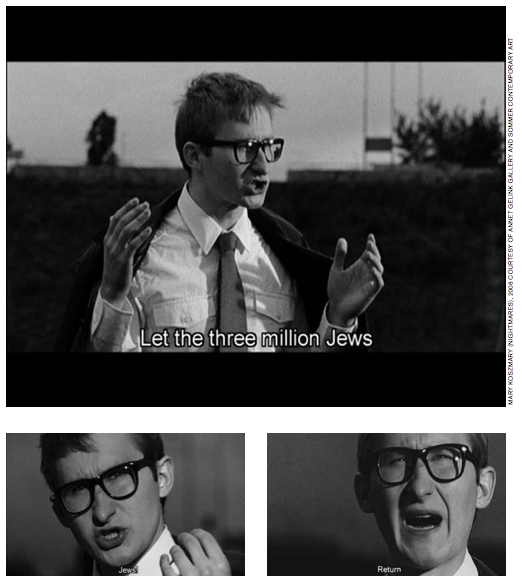
You just finished filming the third part of your trilogy. What happens in this final part?
‘It is about the assassination of Sierakowski, the leader of the Jewish Renaissance Movement in Poland, the man who asked the Jews to return in the first film, Mary Koszmary. We don’t actually see the assassination, just his dead body. There is a so-called ‘lit de parade’, a ritual common in Catholic countries where the deceased person is officially celebrated for a longer period. Then there is a ceremony, which is a kind of unveiling ceremony of his statues, followed by a series of speeches in honour of the movement and its leader. My idea is to create of sort of conflict within these speeches. I invited different speakers, some of them are real people and some are actors. In fact, there is only one or two actors, the rest are actual activists or politicians, which makes the speeches very real.’
Did you write the speeches yourself?
‘Some of them I worked out together with a writer, others are written by the speakers themselves. I was hoping to have the Minister of Culture of Poland participate in the film, but he cancelled the day before unfortunately. Maybe he didn’t trust the project enough or maybe he was just too busy. In any case, I’m trying now to complicate the story. The trilogy about Poland deals with Zionism and the ghost of the Holocaust. In the final part I’m trying to give a voice to the ghosts that were killed. It’s going to be a strange and little bit psychic movie. On the one hand it will be very real, but on the other hand I will try to disturb it and have a more strange atmosphere. I always try to complicate things and make them weird.’
Even though he didn’t participate in the film, the Polish Minister of Culture is very supportive of your project. He actually selected your work to represent Poland at the upcoming Venice Biennial.
‘It was a democratic process: every artist could apply and there was a committee of fourteen people that went through the applications. The committee selected my project and then two days later the Minister of Culture signed that he approved their decision. That is very fast, normally it takes him a month to sign.’
Are all reactions to your work this favourable?
‘My work does provoke people. It provokes fanatic people, both from the Israeli and the Polish side. I think it scares them because they take it very real and one to one, as if tomorrow I’m sending three million Jews back to Poland. And from Israel side it’s scary because it goes against the Zionist ideology. I mean, there are different streams within Zionism, but one of them is that all Jews should be in Israel. So it goes against that stream.’
Your work is getting more and more real. The fictional movement that you created, the Jewish Renaissance Movement in Poland, is starting to have a real impact.
‘It’s now in a transition from fiction to reality. In a way it also becomes more real because the Minister of Culture accepted my project to represent Poland in Venice. This created a new reality to the movement. Suddenly I’m confronted with real issues: Is such a movement actually possible? What does it mean? Next year we will have the first congress of the movement, which will be part of the Berlin Biennale. This means that I’m working closely with the Polish artist Artur Zmijewski, who has been appointed curator of the 7th edition of the Berlin Biennale. According to him, artists should use their art to affect social change.’
Your work has always balanced on the fine line between fact and fiction. Are you now moving from the ‘poetic’ more towards the ‘political’?
‘Somehow it already happened. My project really created a political impact, even if it is maybe at a small scale. But I feel there is more and more demand for something very real, and to make real changes. Zmijeweski’s work and motivation are different than mine, he often adapts the strategies of political action in his work, but I do feel that it is important to work on changing people’s vision of the world. But it needs time. It needs some kind of openness and willingness to acknowledge a multi-cultural and multi-religious world – because it is already there. I think it is a matter of giving time for changes. It is about trying to imagine different political spheres and to see whether it is possible to deal with politics with artistic tools.’
